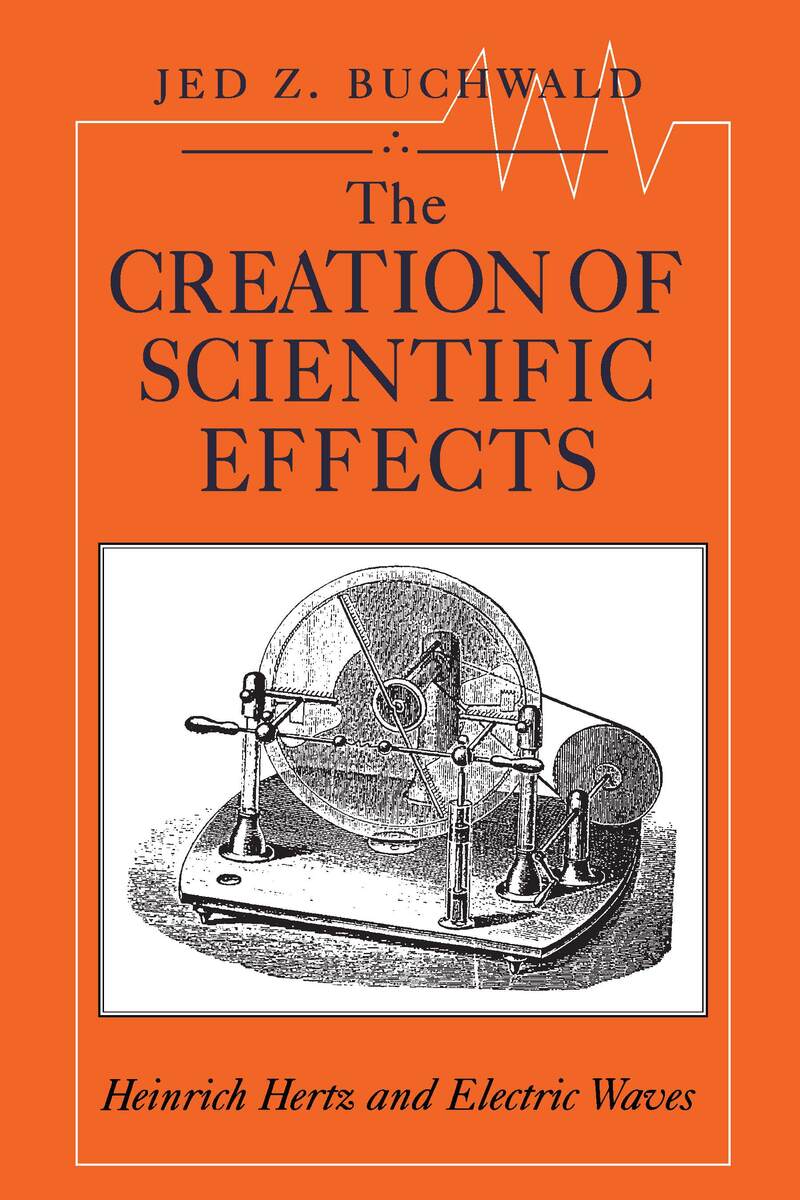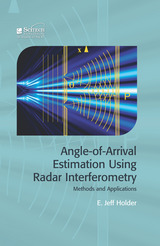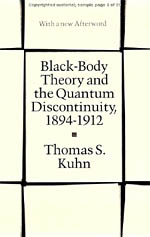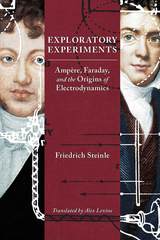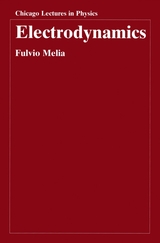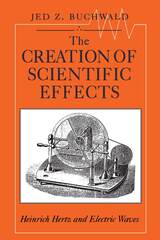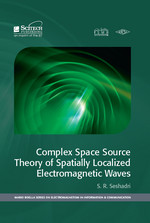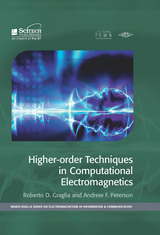The Creation of Scientific Effects: Heinrich Hertz and Electric Waves
University of Chicago Press, 1994
Cloth: 978-0-226-07887-8 | Paper: 978-0-226-07888-5 | eISBN: 978-0-226-07891-5
Library of Congress Classification QC661.B85 1994
Dewey Decimal Classification 537
Cloth: 978-0-226-07887-8 | Paper: 978-0-226-07888-5 | eISBN: 978-0-226-07891-5
Library of Congress Classification QC661.B85 1994
Dewey Decimal Classification 537
ABOUT THIS BOOK | TOC | REQUEST ACCESSIBLE FILE
ABOUT THIS BOOK
This book is an attempt to reconstitute the tacit knowledge—the shared, unwritten assumptions, values, and understandings—that shapes the work of science. Jed Z. Buchwald uses as his focus the social and intellectual world of nineteenth-century German physics.
Drawing on the lab notes, published papers, and unpublished manuscripts of Heinrich Hertz, Buchwald recreates Hertz's 1887 invention of a device that produced electromagnetic waves in wires. The invention itself was serendipitous and the device was quickly transformed, but Hertz's early experiments led to major innovations in electrodynamics. Buchwald explores the difficulty Hertz had in reconciling the theories of other physicists, including Hermann von Helmholtz and James Clerk Maxwell, and he considers the complex and often problematic connections between theory and experiment.
In this first detailed scientific biography of Hertz and his scientific community, Buchwald demonstrates that tacit knowledge can be recovered so that we can begin to identify the unspoken rules that govern scientific practice.
Drawing on the lab notes, published papers, and unpublished manuscripts of Heinrich Hertz, Buchwald recreates Hertz's 1887 invention of a device that produced electromagnetic waves in wires. The invention itself was serendipitous and the device was quickly transformed, but Hertz's early experiments led to major innovations in electrodynamics. Buchwald explores the difficulty Hertz had in reconciling the theories of other physicists, including Hermann von Helmholtz and James Clerk Maxwell, and he considers the complex and often problematic connections between theory and experiment.
In this first detailed scientific biography of Hertz and his scientific community, Buchwald demonstrates that tacit knowledge can be recovered so that we can begin to identify the unspoken rules that govern scientific practice.
See other books on: Buchwald, Jed Z. | Creation | Electric waves | Physicists | Physics
See other titles from University of Chicago Press
